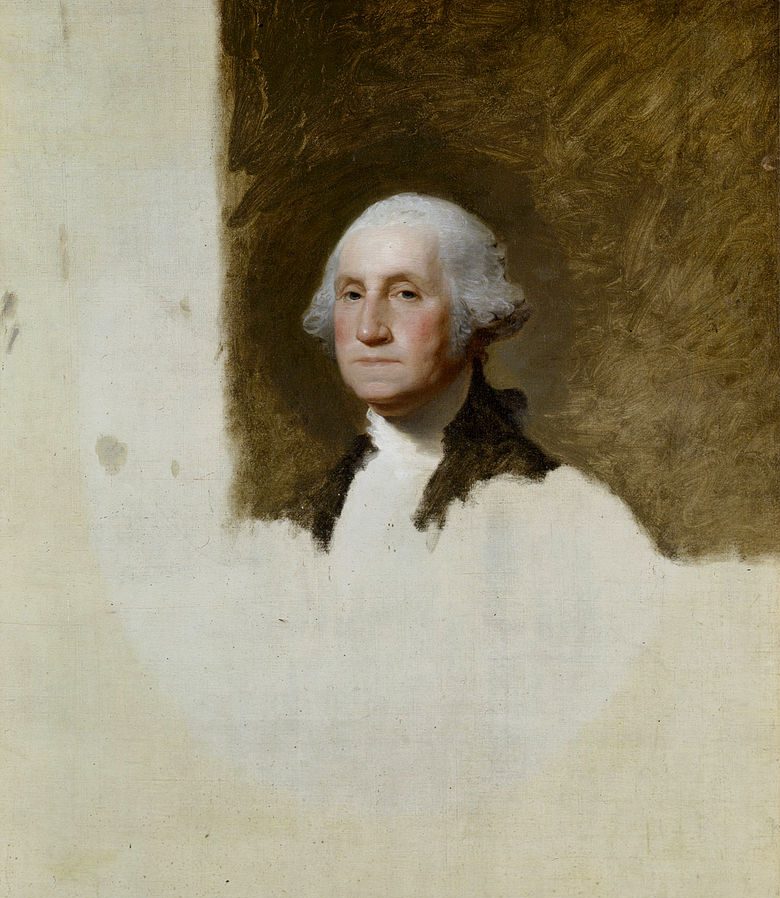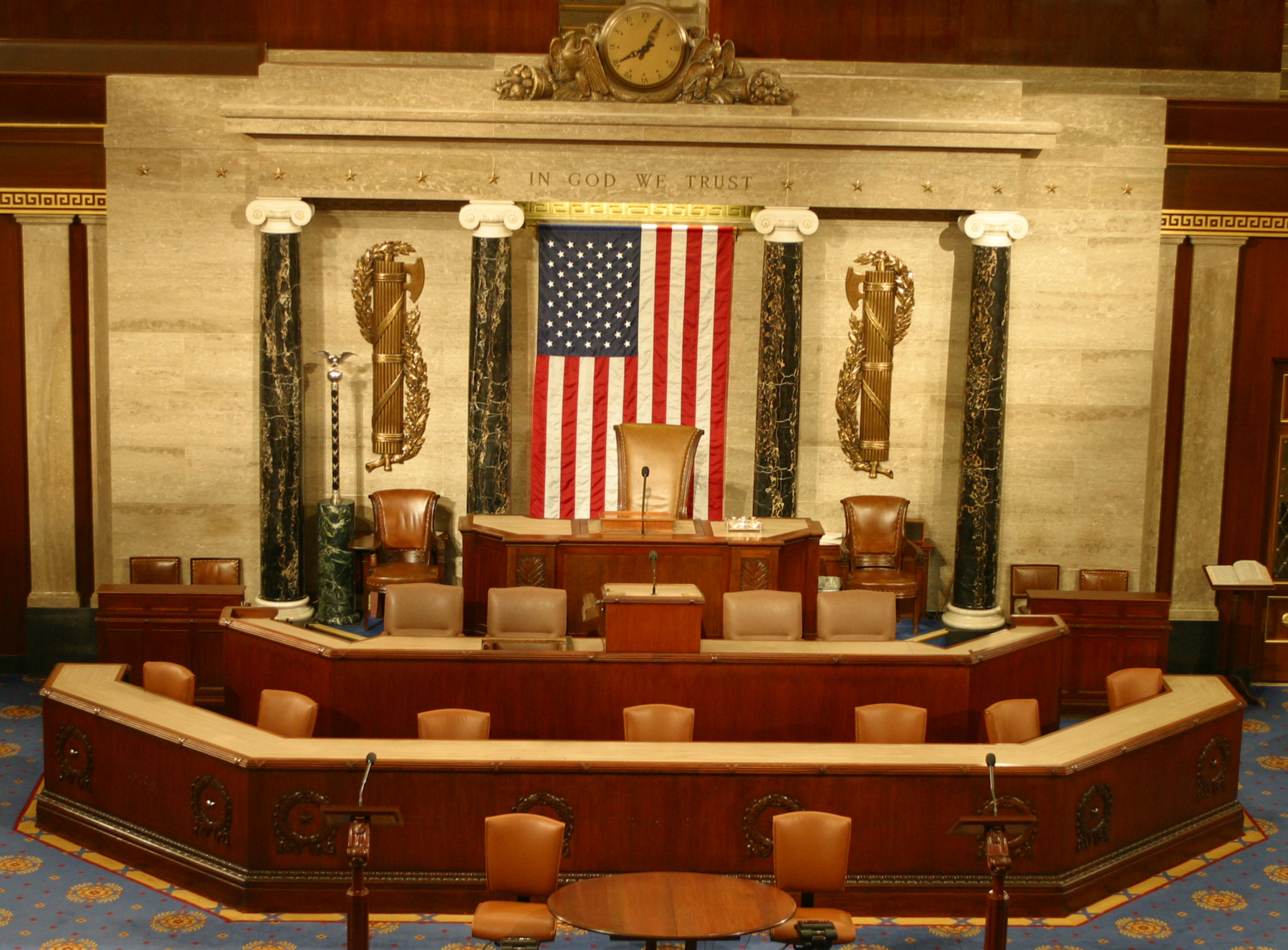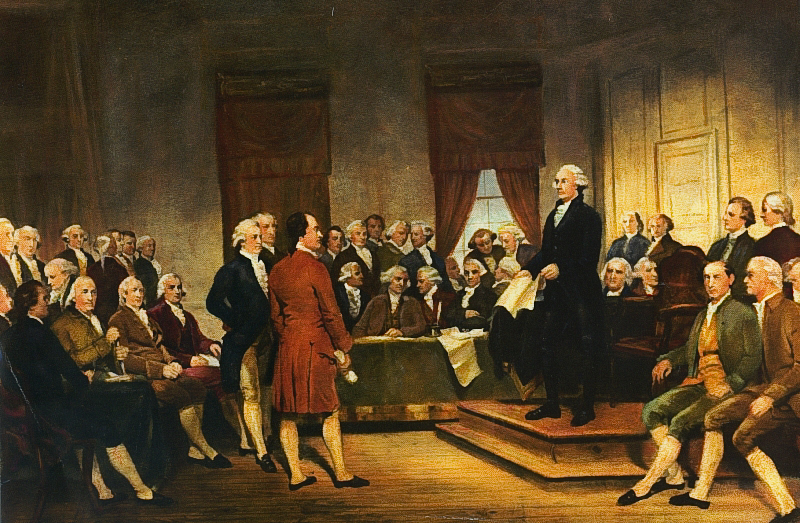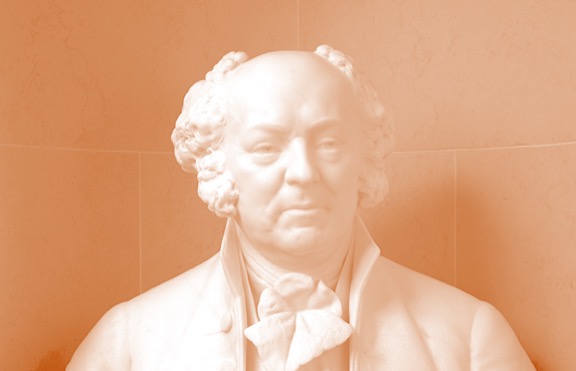The 2016 Election, the 1960 World Series, and the Electoral College

Root, root, root for the electors. If they don't win it's a shame.
In the 2016 presidential election more Americans voted for Hillary Clinton than for Donald Trump—2,958,686 more, to be exact. She received 48.18% of the 139,669,276 ballots cast, while he received 46.09%. Her 2.09% margin of “victory” exceeds the popular-vote advantage of several candidates who actually became president, including John Kennedy in 1960, Richard Nixon in 1968, and Jimmy Carter in 1976.
Many Democrats, Clinton among them, cite this fact to insist that she, the 2016 election’s rightful winner, was unfairly denied the presidency by a malign anachronism, the Electoral College. In that venue, Trump won by virtue of receiving more popular votes than Clinton in 30 states that, collectively, cast 305 electoral votes, a majority of the College’s 538.
Columnist Joel Mathis, for example, contends that since equality is the fundamental democratic principle, so too is majority rule, which gives each citizen’s vote the same weight. Accordingly, he argues, we should jettison the Electoral College, an anti-majoritarian and therefore undemocratic institution. On five occasions (1824, 1876, 1888, 2000, and 2016) in our nation’s 58 presidential elections, or 8.6% of the time, it has indeed awarded the presidency to a candidate who received fewer popular votes than one of his opponents. Several Democratic senators have now introduced a constitutional amendment that would replace the Electoral College with direct popular election of the president.
Their efforts, I believe, deserve to fail. Yes, majority rule is a democratic principle, but so too are the elected government’s effectiveness and legitimacy, as well as the nation’s domestic tranquility. To argue that all these needs are better served by the Electoral College than they would be by direct popular election, let me pose a question from, well, left field: Should we retroactively declare the New York Yankees winners of the 1960 World Series? The record book says that New York’s opponent, the Pittsburgh Pirates, won that year’s Series four games to three. But considered from a different vantage point, the Yankees won by a landslide. Over the course of seven games they scored a total of 55 runs while the Pirates managed only 27.
New York’s problem was that it won three games by double-digit margins: 16-3, 10-0, and 12-0. In winning one game by three runs, another by two, and two more by just one run, Pittsburgh was either more efficient or more fortunate. If the World Series were scored like the Tour de France or the Masters golf tournament, where the advantage secured by finishing in first place in one day’s competition carried over to all subsequent days of the contest, the Yankees would have held an insurmountable lead after the first three games in 1960, during which they outscored the Pirates by a total of 30-9.
But that’s not the way it works. The object, instead, is to be the first team to win four games. You don’t get extra credit for winning any one of them by a big margin, nor is there any penalty or asterisk for winning another by just one run. A win is a win is a win.
In this sense the World Series is even less majoritarian than the Electoral College. Out of 114 fall classics, the team that won fewer games scored more total runs on 22 occasions, 19.3% of the time. Three other years, the winning and losing teams scored an equal number of runs. It was a bad omen for the Clinton campaign when, one week before Election Day, the Chicago Cubs won the World Series against the Cleveland Indians despite each team scoring 27 runs over seven games.
Even as the World Series is played game-by-game, the Electoral College requires presidential candidates to contest the election state-by-state. And because 48 states award their electoral votes on a winner-take-all basis, the Electoral College diminishes the value of an enormous victory in a particular state the same way the World Series renders winning any one game by a double-digit margin irrelevant. (Maine and Nebraska have a more complicated procedure for allocating electoral votes, but between them cast only nine.)
Thus, Hillary Clinton’s problem in 2016 was much the same as the Yankees’ in 1960. She scored overwhelming victories in a number of big states. She defeated Donald Trump by over four million votes in California, for example, where she won 61.7% of the vote, and won New York with a margin exceeding 1.7 million votes. Those two states, by themselves, gave her six million more votes than Trump, accounting for more than twice her national advantage. But the 84 electoral votes she received from them (55 and 29, respectively), were exactly the same total she would have secured if her victory margins had been smaller.
Trump won the election the way Pittsburgh won the World Series, with numerous rather than lopsided victories. He had fewer voters than she did, but they were located in the country’s 50 states in a way that made their ballots more consequential. His path to Electoral College victory was simple but not easy. First, he held all 24 states that Mitt Romney carried against Barack Obama in 2012, which gave him a base of 206 electoral votes. Second, Trump won three “purple” states that had been carried twice by Obama but at least once by George W. Bush. They brought him an additional 53 electoral votes—29 from Florida, 18 from Ohio, and 6 from Iowa.
These 27 states brought his total to 259 electoral votes, close to but still shy of 270, the bare minimum for an Electoral College majority. The presidency was secured late on Election Night when Trump narrowly carried Michigan (16 electoral votes), Pennsylvania (20), and Wisconsin (10), “blue” states where no Republican presidential nominee had prevailed since the 1980s. Michigan or Pennsylvania, by itself, or Wisconsin in combination with either of the other two, would have given Trump more than 270 electoral votes, and the presidency.
Trump’s total popular-vote margin in these three states was 77,744 votes, 0.56% of the 13,940,912 that were cast. Donald Trump once owned and operated casinos, but a professional gambler would insist on very favorable odds before betting that such an intricate, close-run sequence of events would occur. By the same token, however, few would have wagered that the 1960 Yankees would score 16 runs in one of the three World Series games they won, but also a total of 17 in the four they lost.
Whatever the differences between sports and politics, they share one feature: it’s unfair and illogical to hold a competition using one set of rules, and then evaluate it after the fact using entirely different rules. To their credit, neither the Yankees nor any of their fans petitioned the commissioner of Major League Baseball to set aside the results of the 1960 World Series in light of New York’s massive advantage in total runs scored. Any such ruling would have penalized the Pirates for competing according to the rules agreed to in advance, rather than on the basis of ones later claimed to be more equitable.
Thus, it made perfect sense for Pirates manager Danny Murtaugh to insert his star relief pitcher, Elroy Face, to protect narrow leads in each of the four games Pittsburgh ended up winning. (Ultimately, Face was credited with three saves.) Conversely, Murtaugh chose not to use Face during the three games where the Yankees raced out to insurmountable leads. Losing those games by smaller margins served no purpose, but wearing out his key pitcher in blowout losses would have reduced Murtaugh’s leverage in games yet to be played, ones where victory was still possible. To penalize the Pirates, or denigrate their victory, for not doing more to overcome New York’s cumulative advantage in runs scored ignores the fact that Pittsburgh had no reason to be concerned about this metric and every reason to ignore it.
Similarly, Trump won the contest he entered, where the goal all along was to secure popular-vote majorities in enough states to amass at least 270 electoral votes, which each state awarded on a winner-take-all basis. He lost the contest he did not enter, the one to receive more popular votes nationwide than his opponent. But because he wasn’t pursuing that goal, and had no reason to, we cannot simply assume that Trump would have lost the popular vote if the election had been contested on that basis. Sensibly, the Trump campaign followed Danny Murtaugh’s strategy and devoted few resources—candidate or surrogate appearances, mailings, television ads, and get-out-the vote efforts—to states that were lost causes; Trump got less than 40% of the popular vote in ten states as well as the District of Columbia. There was also no point in making an all-out effort in states that were won causes, such as the nine where Trump ended up getting more than 60% of the vote.
Indeed, one of the reasons Trump defeated Hillary Clinton was that, despite having never run for public office before 2016, he assembled a campaign organization possessing a better strategic sense than hers about how to secure the presidency. Three weeks before Election Day, the New York Times reported that Clinton’s aides were voicing “extraordinary confidence” in what they “increasingly believe will be a decisive victory.” On this basis, the campaign aspired to something grander and more profound than merely winning a presidential election. The goal became to “deliver a punishing message to Mr. Trump and Republicans,” a defeat “so humiliating that it jars him and [them].”
Accordingly, the Clinton strategists decided to invest time and money during the campaign’s final weeks in states the Times described as “traditionally right-leaning,” including Arizona, Indiana, Missouri, Texas, and Utah. Clinton ended up losing all five, by margins ranging from 3.6% in Arizona to at least 18% in Indiana, Missouri, and Utah. (Nor were there any coattail effects from Clinton’s efforts. Democrats lost Senate races in Arizona, Indiana, and Missouri despite having had a degree of hope about all three contests.) In other words, Trump came within 2.09% of Clinton’s nationwide popular vote total despite the fact that he wasn’t trying to win that competition and she, to some extent, was.
There’s no prospect that Major League Baseball will change the World Series so that the winning team is the one scoring the most total runs, regardless of how individual games turn out. There is some likelihood, however, that we’ll discard the Electoral College and start awarding the presidency to the candidate receiving the most popular votes, nationwide. Does the national pastime shed any light on the wisdom of this political question?
For one thing, it demonstrates that majoritarianism is not a simple question. Consider a hypothetical debate between innovators who want to award the World Series championship to the team that scores the most runs over the entire contest, and reactionaries who defend the practice of giving it to the team that wins the most games. Their argument is not about the principle that the team scoring the most runs should win. Both accept it. The issue between them is how the principle should be applied. The innovators want to turn the World Series into an unsegmented, undifferentiated competition that begins with the first pitch and continues until the final at-bat. The reactionaries apply the principle about scoring the most runs to individual games, then go on to make winning the most games the determinant for winning the series.
In the same way, the debate over whether to institute a national popular presidential election or retain the Electoral College is not between advocates for and opponents of majority rule. The question, rather, is: a majority of what? The entire national electorate, or the electorates in the individual states? Rather than dividing majoritarians from anti-majoritarians, the Electoral College debate is between those who want to nationalize majoritarianism and those who want the application of the principle to remain federalized.
The strongest argument for doing the latter, I believe, is that not all majorities are created equal. Not all of them, that is, are equally conducive to certain crucial democratic tasks. One is reconciling the minority that lost an election by reassuring it that the electoral process and outcome were legitimate; that its rights, interests, and dignity will be respected in the interim before the next election; and that there will indeed be a next election. The corollary task is to restrain the victorious majority through incentive structures that reward a politician who moderates (or even obfuscates) differences of opinion, interests, or worldview, while penalizing a politician for intensifying them.
We’ve grown so accustomed to transferring power on the basis of election results that it is difficult to appreciate how extraordinary it is. For President John Adams to lose his bid for a second term to Thomas Jefferson in 1800, and then accede to the result and leave office, was unprecedented not just in American but human history. As Harry V. Jaffa wrote in A New Birth of Freedom (2000), the 1800 election marked the first time—ever, anywhere—that power “passed from one set of hands to those of their most uncompromisingly hostile political rivals and opponents because of a free vote.”
Having acquired this habit of accepting election results, we should be wary rather than complacent about losing it. Nationalizing presidential elections renders them susceptible to a dangerous kind of majority, one that a system of choosing presidents on the basis of state-by-state, winner-take-all elections guards against. Federalized presidential elections under the Electoral College encourage candidates to build broad coalitions of voters, ones that encompass or at least appeal to many different kinds of voters in many different states. Direct popular election, by contrast, allows for the possibility of electing a president whose support is deep but narrow.
Using the 2016 election turnout numbers, we can construct an extreme hypothetical case. If, in a two-person race, Candidate X had received 100% of the popular vote in California, while Candidate Y won each of the other states by 55.79% to 44.21%, X would have become president under a direct popular election system by virtue of receiving 66,334,639 votes to Y’s 66,334,637. Run those exact election results through our current system, and Candidate Y becomes president by an Electoral College landslide, 483 – 55.
I submit that, under this scenario, X’s victory is the strictly majoritarian outcome, giving the presidency to the candidate who received 50.000001% of the popular vote. Y’s election in the Electoral College, however, is the more democratic outcome. It discounts X’s national majority, constructed even though X is decidedly less popular than Y in every state but one. Instead, the Electoral College confers the presidency on the candidate whose vote, weighed and considered rather than simply counted, best reflects the popular will. And it promotes the health of our democracy by rewarding Y for forming a coalition that was broad and eclectic, while penalizing X for a coalition that was narrow and intense.
Sportsmanship and statesmanship have things in common. In athletics, there are informal but strong sanctions against “running up the score” for no purpose other than to humiliate an already defeated opponent. Honorable competitors disdain systems that incentivize bad sportsmanship, such as in college football where teams are rewarded for compiling meaningless touchdowns against overmatched opponents, the better to impress the committee selecting four teams to compete for the national championship.
Statesmanship, too, seeks not just to prevail but to propitiate. Speaking as the victor of the 1860 presidential election to those who had lost it, Abraham Lincoln said, “We are not enemies, but friends. We must not be enemies.” We know that Lincoln’s entreaties were unavailing, but also know how horribly subsequent events proved the wisdom of his remarks. Like the World Series, the Electoral College discourages rather than rewards running up the score, thereby reducing rather than deepening our political differences and animosities. If majoritarian fundamentalism leads us to jettison that system for direct popular election, we will look back on the anomaly of inaugurating a handful of presidential aspirants who received fewer popular votes as a small price to have paid.
The American Mind presents a range of perspectives. Views are writers’ own and do not necessarily represent those of The Claremont Institute.
The American Mind is a publication of the Claremont Institute, a non-profit 501(c)(3) organization, dedicated to restoring the principles of the American Founding to their rightful, preeminent authority in our national life. Interested in supporting our work? Gifts to the Claremont Institute are tax-deductible.
Part I: Unfettered reason cannot conserve anything.
Part II: Honor and self-constraint can stave off tyranny.






